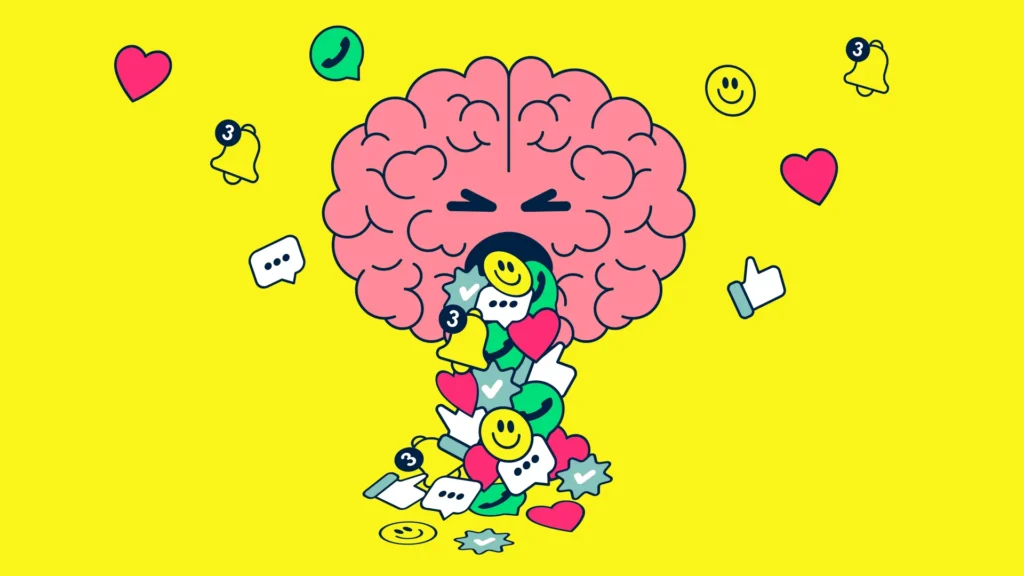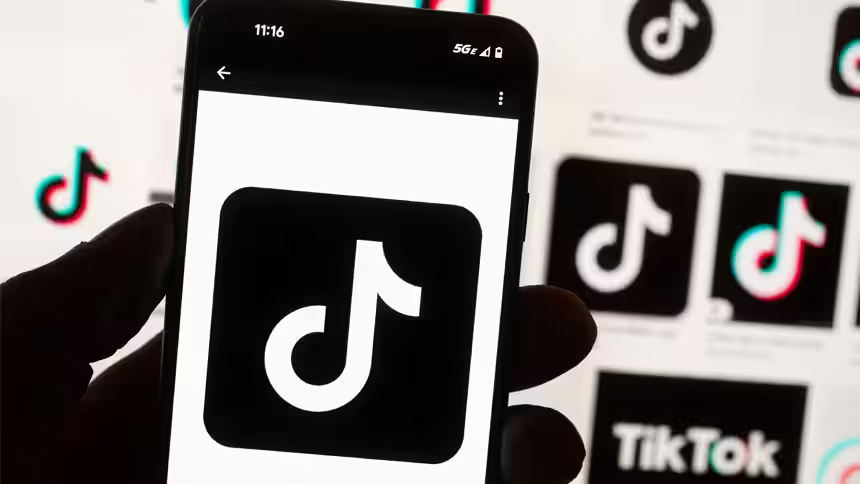If it feels like “I’ll watch one more clip” turns into 45 minutes, that’s not an accident. TikTok’s short‑video format, tuned recommender, and design patterns exploit how attention and reward work in the brain: frequent, unpredictable payoffs; minimal friction; and instant personalization that learns from every micro‑gesture. The result is a tight loop—see, react, reward, repeat—that is easy to start and hard to stop.
The For You Page: a personalization engine in your pocket
TikTok’s For You Page continuously predicts the next clip most likely to keep attention based on a blizzard of signals: watch time, replays, pauses, likes, comments, shares, follows, skips, search terms, captions read, audio choices, and even which videos are abandoned in the first second. With millions of candidate videos and billions of daily interactions, the system learns quickly what “works” for each person, then leans into it.
- Collaborative filtering: People who watch A also watch B, so B is offered earlier and more often.
- Content cues: Text, audio, visual tags, and topics help generalize interest to similar clips even from new creators.
- Real‑time testing: Early engagement data decides whether a video is “pushed” to bigger pools, letting the platform evolve tastes in hours, not weeks.
The upshot: the feed feels telepathic. It’s simply very good at predicting what will keep eyes on the screen.
Variable rewards: why “one more video” never feels like the last
In behavioral psychology, intermittent (unpredictable) rewards drive the most persistent seeking behavior. TikTok leans on this with a slot‑machine‑like cadence:
- Variable ratio schedule: Most clips are “meh,” but every few swipes, a perfect hit lands—humor, awe, novelty, validation—triggering a reward‑prediction error that surges dopamine signaling.
- Dense feedback: Likes, comments, and view counts translate social approval into frequent micro‑rewards.
- High velocity: 7–15‑second clips compress the explore‑reward loop into dozens of trials per minute.
The brain learns, “the next swipe might be great,” and so the thumb keeps going.
Hooks, loops, and micro‑editing that capture attention
Creators optimize for the first second: a visual pattern interrupt, bold on‑screen text, a provocative promise, or a familiar trending sound. Add tight jump cuts, captions for silent autoplay, and end‑cuts timed to loop seamlessly, and the viewer is nudged to rewatch—another strong positive signal to the algorithm.
Common tactics:
- Hook first: “Wait for it,” “No one told me this,” or a surprising visual to spike curiosity.
- Pattern interrupts: Sudden scene changes and zooms reset attention when it drifts.
- Seamless loops: Cut on the beat so the video appears endless; rewatches inflate “quality.”
These choices don’t just entertain; they condition rapid orientation to stimuli and quick reward checks, training the mind toward short cycles.
Habit loops: cue → craving → response → reward
Classic habit models explain why TikTok becomes a default reflex:
- Cue: Boredom, a pause in the day, or a notification.
- Craving: Anticipation of novelty or relief.
- Response: Open the app, swipe.
- Reward: Humor, validation, surprise, or just relief from boredom.
Repeat this loop enough times and the brain “chunks” it into an automatic routine. Environmental cues—phone on the desk, bedtime, a commute—start the loop without deliberate intention.
Time dilation and attentional residue
The stream’s micro‑novelty creates a sense of continuous forward motion that distorts time perception—minutes feel like moments. Frequent context switches also leave “attentional residue,” where fragments of previous clips linger, sapping focus for deep work. Over an evening, this translates into sleep delays and lower sleep quality, compounding next‑day fatigue and making short‑term rewards even more tempting.
Mood shaping and “algorithmic gravity”
TikTok’s personalization can nudge mood without explicit intent. If someone lingers on anxious content, the system might feed more of it; if they pause on uplifting clips, the tone can swing. Over time, the feed reflects back a concentrated version of what most reliably holds attention—not necessarily what’s most helpful. That “algorithmic gravity” can narrow perspectives, amplify emotional states, or skew beliefs through repetition.
Social validation and parasocial cues
Likes, shares, duets, stitches, and lives turn the feed into a social pressure cooker:
- Variable social rewards: A post’s engagement is unpredictable; checking it becomes another intermittent reward loop.
- Parasocial intimacy: Direct eye contact, casual settings, and confessional tones create a sense of closeness that boosts trust—and influence.
- Live gifting and chat: Real‑time feedback intensifies emotional salience and urgency.
These layers can be healthy connection or addictive compulsion depending on context and boundaries.
Why short video hits different from other feeds
- Faster feedback: You can like a tweet, but only video compresses story, music, face, text, and edits into a multisensory punch every few seconds.
- Minimal friction: Infinite scroll, no page loads, and autoplay reduce the micro‑effort that might otherwise trigger “Do I keep going?”
- Ubiquitous creation: The same algorithm that hooks viewers coaches creators to produce more hooky content, reinforcing a cycle of optimization for attention capture.

Cognitive and physiological considerations
- Blue light and bedtime use: Suppresses melatonin and delays sleep onset; the short‑video reward loop aggravates bedtime procrastination.
- Working memory load: Rapid context switching fatigues executive control, making self‑interruption more likely later.
- Emotional volatility: Sudden shifts from humor to outrage to awe can create mood whiplash that lingers beyond the session.
None of this equals brainwashing; it’s a set of nudges that, combined, tilt behavior toward more time on the platform.
“But I learn so much on TikTok”—both things can be true
There’s real value: concise how‑tos, language hacks, science explainers, niche communities, and discovery that text alone can’t match. The trick is maximizing learning while minimizing drift:
- Search‑led sessions: Start with a learning goal; use search and playlists instead of pure For You swiping.
- Follow‑only mode: Stick to trusted educators; prune the follow list.
- Save‑to‑do: Move valuable clips into a notes system (with links, summaries, and next actions) so knowledge escapes the feed.
How to take back control without quitting
Small environmental changes beat willpower alone. Try a few, then stack:
- Redesign the home screen
- Move TikTok off the dock and into a folder; add friction to reflex opens.
- Use Focus modes to hide the app during work and sleep blocks.
- Time‑box by default
- Set an in‑app daily limit; place a real timer on the desk.
- Pair sessions with bounded activities (e.g., tea steeping, a 10‑minute break).
- Make the algorithm work for you
- Tap “Not Interested” on content that derails mood; long‑press to filter keywords or sounds where possible.
- Like, save, and follow only what aligns with goals; neutral on everything else.
- Reduce bedtime drift
- Keep the phone outside the bedroom; charge elsewhere.
- Use grayscale at night; it reduces the sensory pull of thumbnails.
- Switch consumption modes
- Prefer “Following” over “For You” when tired or vulnerable.
- Replace late‑night swiping with a long‑form alternative (a book chapter, a podcast episode).
- Accountability and awareness
- Weekly check‑in: total minutes watched, mood before/after, most common cue.
- Swap TikTok’s notifications for a single daily “digest” reminder (or turn them off).
Parents and guardians: safeguards that actually help
- Family Pairing and Restricted Mode: Link accounts to set screen‑time caps, filter mature content, and limit DMs.
- Shared norms: Agree on “charging zone” outside bedrooms, study‑time Focus modes, and a weekly review of what the feed is surfacing.
- Teach the model: Encourage using “Not Interested,” reporting, and following value‑add creators; discuss why certain content holds attention.
For creators: ethical reach without manipulation
- Hook with value, not bait: Promise a tangible payoff in the first second and deliver it quickly.
- Respect cognitive load: One idea per clip; avoid outrage loops that drive empty engagement.
- Close the loop: Offer off‑platform resources (notes, summaries, links) so learning persists.
- Design for consent: Be clear when content is sponsored; avoid covert persuasion tactics.
What TikTok can do (and sometimes does) to improve well‑being
- Transparent controls: Make “Not Interested,” muting, and keyword filtering prominent and effective.
- Session breaks: Gentle, periodic friction after long watch streaks.
- Dimming high‑arousal content late at night: Optional, user‑controlled.
- Research partnerships: Share data with independent teams to study mood, sleep, and usage patterns—and publish the findings.
Conclusion
TikTok’s hold on attention isn’t magic; it’s math, media craft, and the mammal brain. Personalization learns what sparks a response. Variable rewards keep the seeking system on. Frictionless design removes moments where choice might intervene. Over time, habit loops form, mood drifts with the feed, and “five minutes” expands. This doesn’t make TikTok inherently bad, but it does put the burden on design—and on users—to introduce counter‑weights: clearer goals, gentler defaults, better boundaries, and tools that reinforce a person’s intent rather than eroding it. Use the app; don’t let it use the gaps in how attention works.
References / Sources
- American Psychological Association — Social media and mental health: https://www.apa.org/topics/social-media
- Pew Research Center — Teens, social media and technology: https://www.pewresearch.org/internet/
- BJ Fogg Behavior Model — Tiny Habits & behavior design: https://behaviormodel.org/
- Nir Eyal — Hooked: https://www.nirandfar.com/hooked/
- Stanford HAI — Recommender systems and society: https://hai.stanford.edu
- MIT Technology Review — Algorithms and the attention economy: https://www.technologyreview.com/
- Royal Society for Public Health — Social media and well‑being (Status of Mind): https://www.rsph.org.uk
- TikTok — Safety and Family Pairing tools: https://www.tiktok.com/safety/family-pairing
- TikTok — Transparency Center: https://www.tiktok.com/transparency/en/










Leave a comment